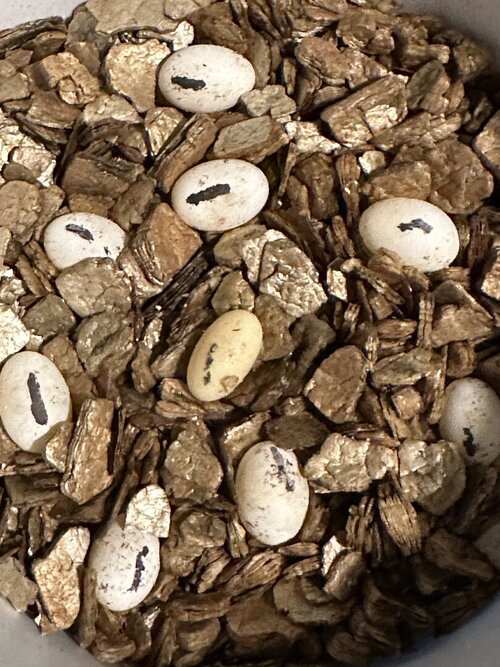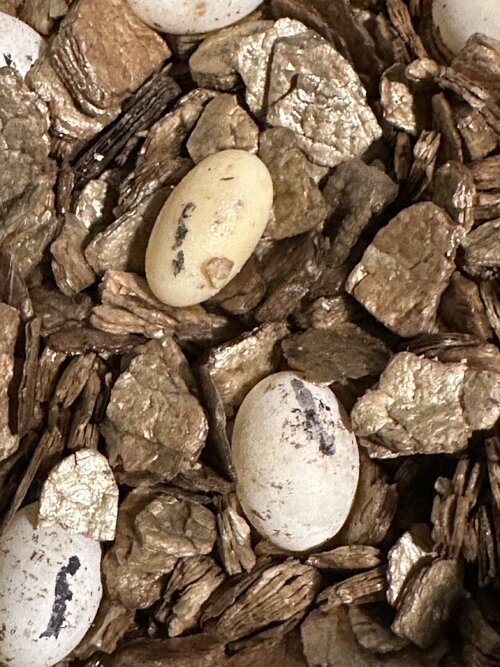Troubledluna80
Established Member
I have carpet Chameleon eggs that were laid in March. They’ve looked great up until this last week. I haven’t added water in 2 weeks so I don’t understand what is going on. The egg in the middle that is now yellow and wet was significantly bigger just a couple days ago. The first thing that happened is the white eggshell started to become more transparent on the top, but was still firm and without mold. When I got home today and checked on them, it is yellowish, feels soft to the touch and significantly smaller or is it dead? There’s still no mold on it. A couple of the other eggs are starting to get those transparent windows and I’m worried I’m going to lose them all. Does anybody have any idea what’s going on?









